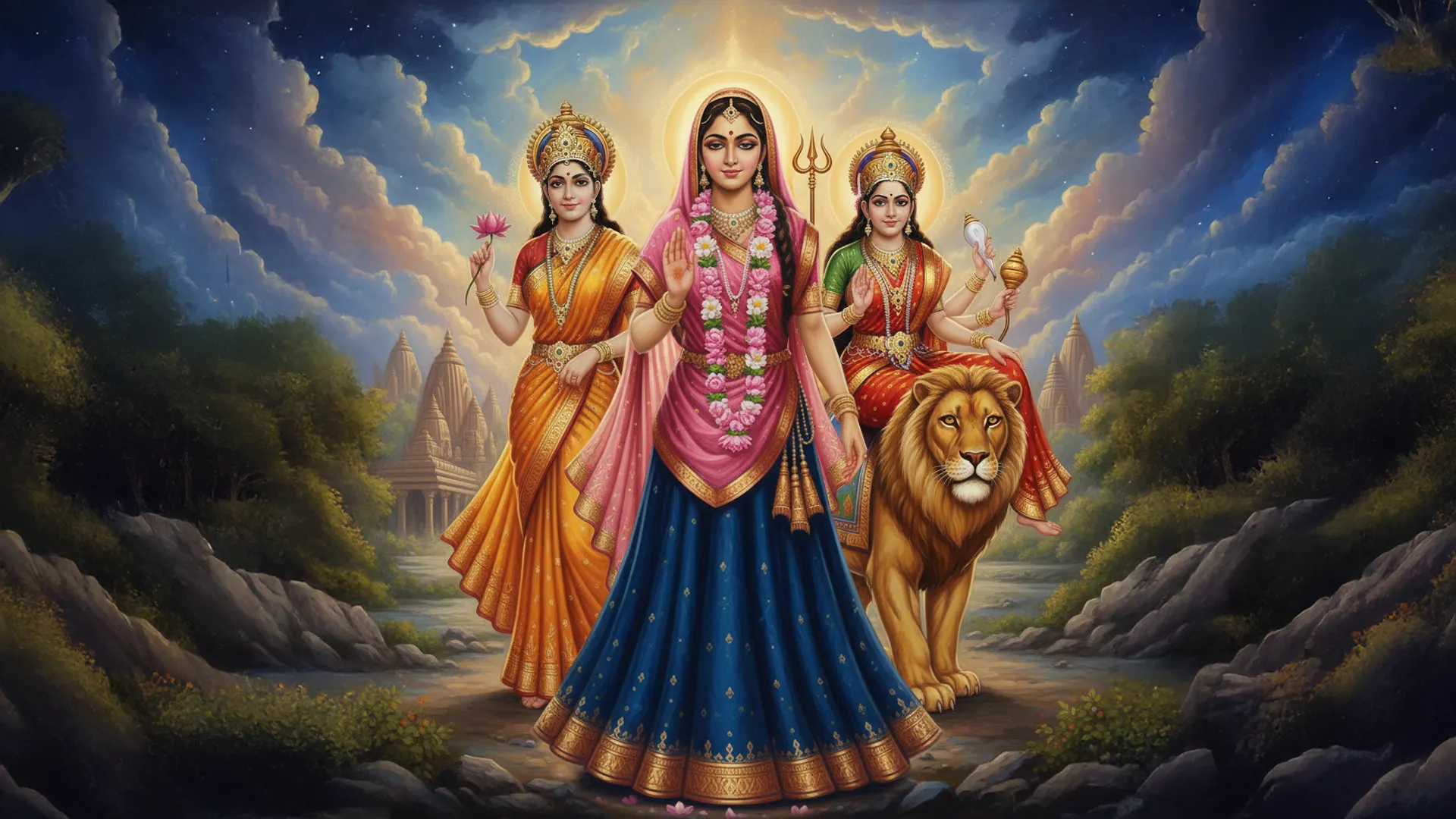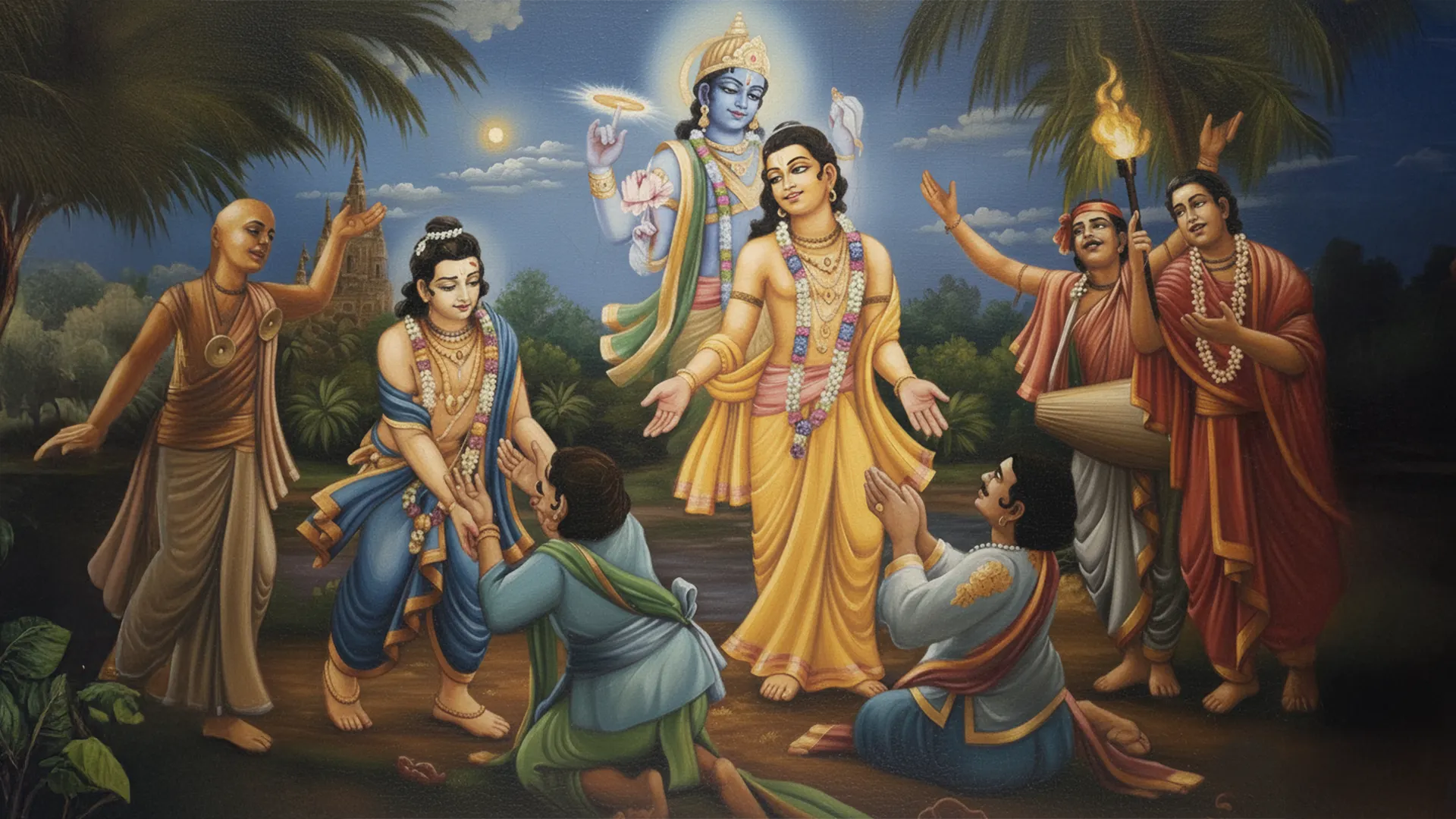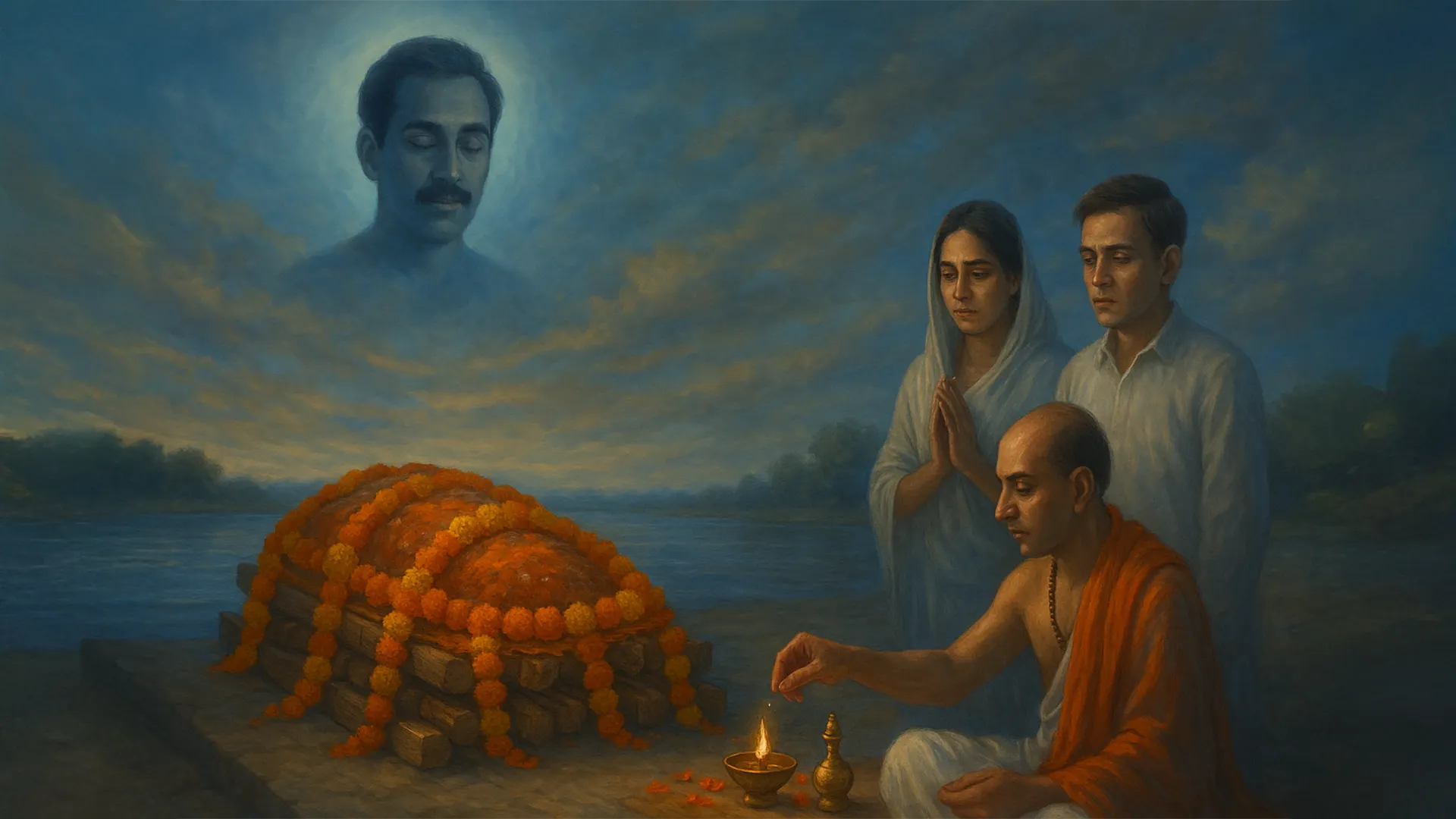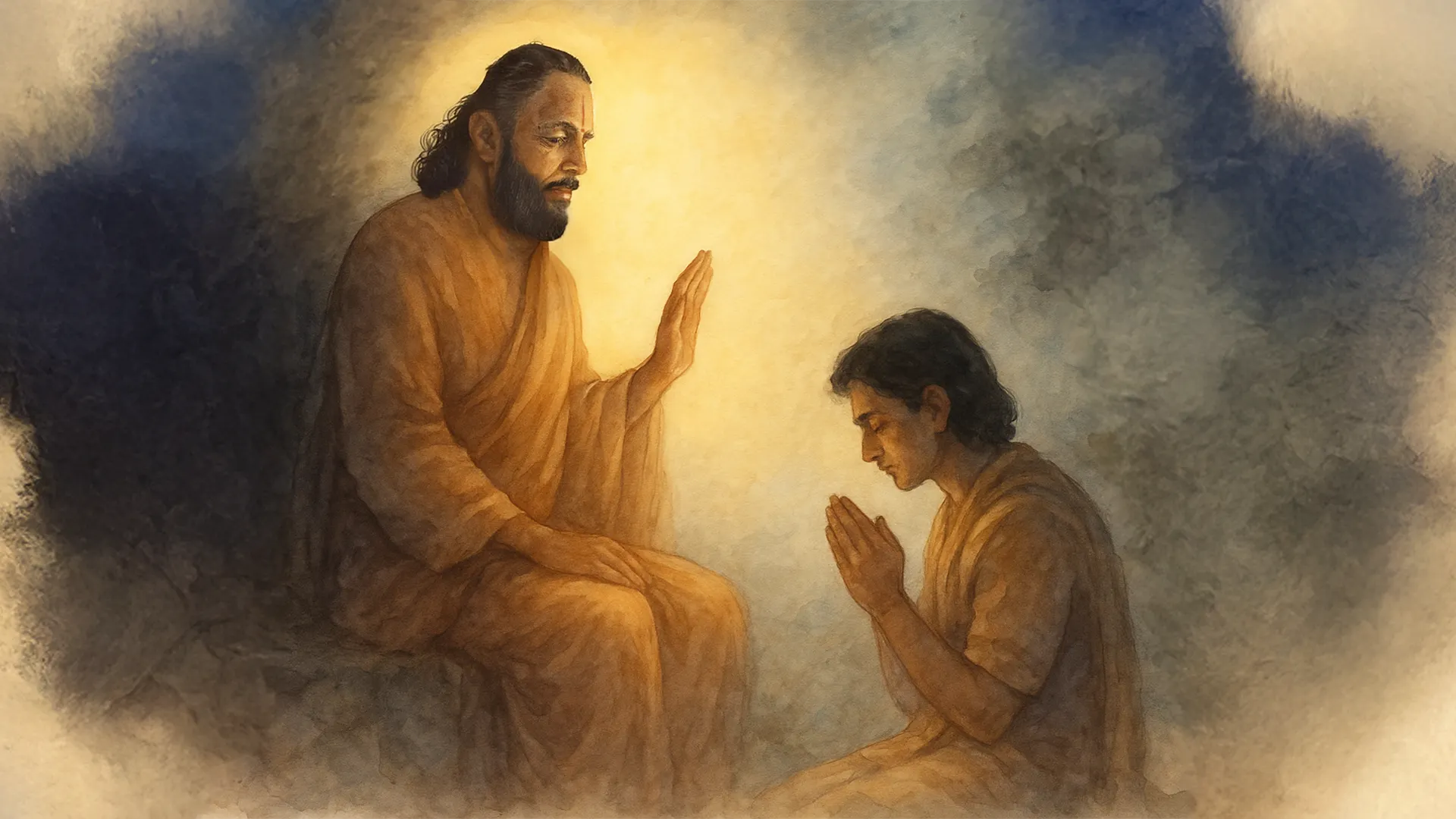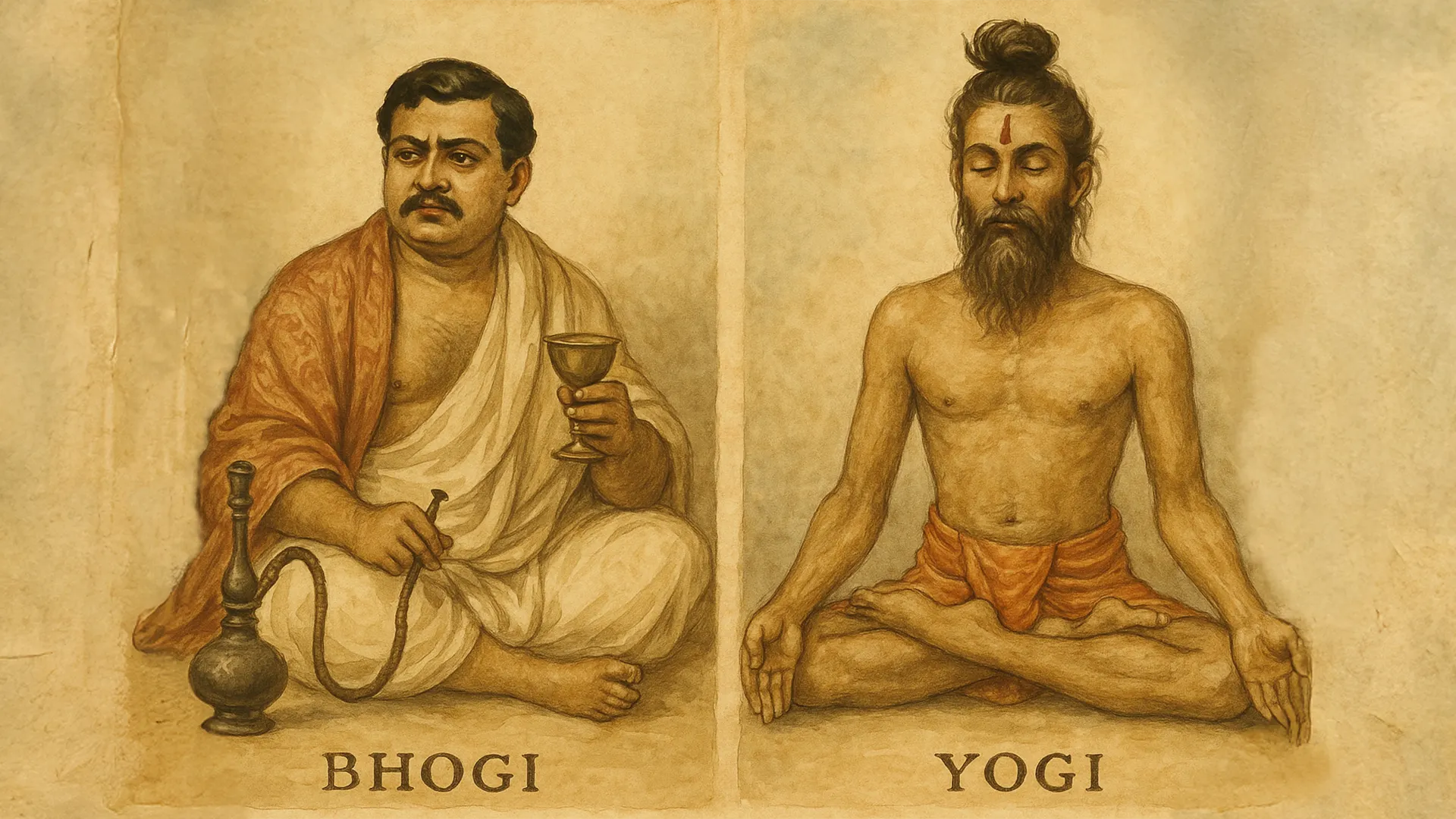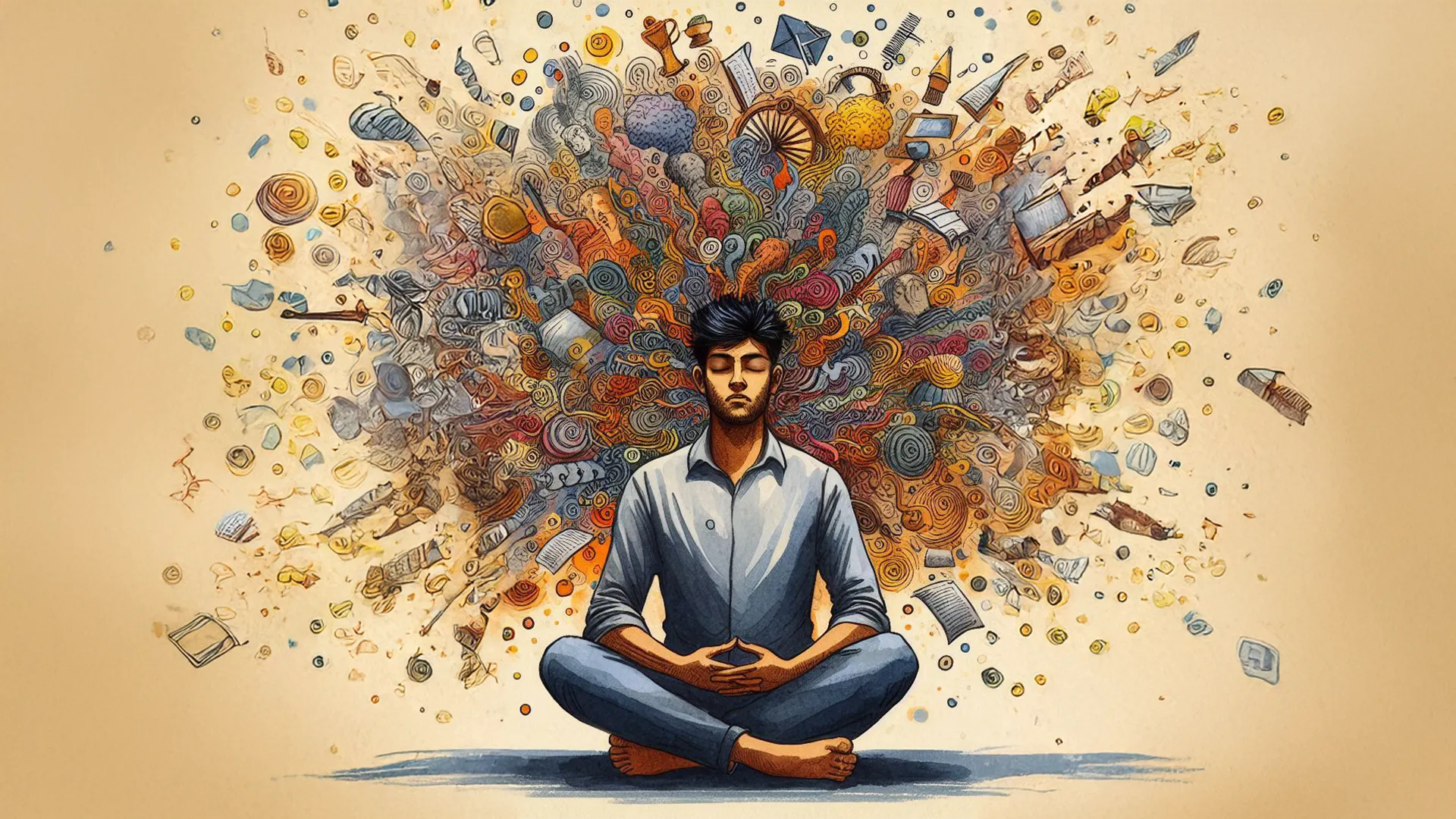Every year, the sacred festival of Navaratri reminds us of the supreme place of the Divine Mother in the spiritual realm. Across nine nights, we worship Her in many forms: Durga, Lakshmi, Saraswati, each manifesting Her unique grace. But the highest truth is that She is not merely a protector or a giver of boons; She is the very heart of Shree Krishna, His Hladini Shakti, the eternal energy of divine bliss.
To understand this more deeply, we must reflect on how Radha, the primordial form of Shakti, relates to other divine manifestations, such as Durga and Rukmini, and why Her love alone has the power to enslave the Supreme Lord.
Durga and Radha: Two Moods of the Divine Mother
Many devotees wonder during Navaratri: What is the difference between Radha and Durga? After all, both are revered as the Divine Mother. The answer lies in their bhava (mood).
Imagine a child returning from school, eager for his mother’s embrace. But when he enters, he finds her with a stick, disciplining his elder brother. The child quietly slips away, thinking, “Maa is not in a loving mood right now. I’ll wait.” The mother is the same, but her expression is different.
Durga Maa embodies the protective, disciplinary, and majestic mood. She holds weapons, removes obstacles, and slays demons. Radha Rani, on the other hand, embodies tenderness, playfulness, and unconditional affection. She is pure sweetness, the embrace of God’s love. In truth, it is Radha who is supreme, and Durga is one of Her expansions manifesting divine opulence.
Radha the Source, Rukmini the Expansion
Another common question is: If Krishna is beyond gender, why do we refer to Rukmini as His wife? And also, why didn’t Krishna marry Radha? The truth is, Krishna is not bound by worldly marriage. He is the Absolute, beyond man and woman. His wives, like Rukmini and Satyabhama, are also energies of the Divine Mother, but they are anugamini shaktis- expansions who follow Radha.
Rukmini’s love is indeed pure, and she is deeply worshipped, especially in Maharashtra as Rukmini Vitthal, and in South India, where most Krishna temples depict Krishna with Rukmini or Satyabhama.
Yet rasik saints of Braj reveal a subtle truth: before Rukmini, Krishna is the majestic Lord; before Radha, Krishna becomes the servant of love. He presses Her lotus feet, reversing roles. The Infinite bows to the power of devotion.
Saints caution us: never reduce Radha-Krishna to a worldly husband–wife relation. They are one divine soul split into lover and beloved.
The Narad Puran (53.38) says:
“राधा वामांशसम्भूता महालक्ष्मीः प्रकीर्तिता।”
rādhā vāmāṁśa-sambhūtā mahālakṣmīḥ prakīrtitā
Radha appeared from the left side of Krishna and is glorified as Mahalakshmi.
This is not about worldly union, but it is about source and energy, love and beloved.
The Yugal Ras – Tasting the Nectar
Shree Krishna experiences bliss in Radha. Radha experiences bliss in Krishna. And devotees experience the bliss of both- this is Yugal Ras, the nectar of divine love. Saints urge us to keep tasting this nectar until the bitterness of materialism fades.
Just as a jaundiced patient finds sugarcane juice bitter but must keep drinking it until his tongue recovers, so too must we keep immersing in the names, glories, and leelas of Radha-Krishna. Slowly, our hearts will awaken to their sweetness.
Closing Reflection
Durga, Rukmini, and Radha are all manifestations of the Divine Mother, yet each reveals a distinct aspect of Her grace. Durga embodies majesty, Rukmini embodies devotion, but Radha embodies the highest, selfless love that even Shree Krishna bows to.
This Navaratri, let us go beyond rituals. As we light lamps, chant mantras, and offer flowers, let us remember: the nine nights of the Goddess ultimately lead us to Radha, the essence of divine bliss, where God Himself becomes bound by love.
Call to Devotion: Be it Radhastami or Navaratri, whisper from your heart, “Jaya Radhe! O Mother, enslave my heart with Your love, and offer me to the lotus feet of Shyamsundar.”

